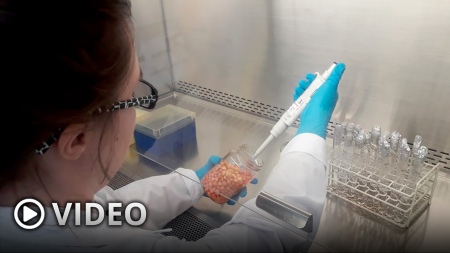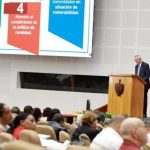The National Agrifood Health and Quality Service (Senasa) presented the new equipment of its national laboratory located in the Buenos Aires town of Martínezand reported on a contribution of US$ 9 million from the Inter-American Development Bank (IDB) that aims to centralize the Vegetable sector in these facilities, and thus strengthen its contribution to public health and sustain and increase export markets .
“The Senasa Laboratory is considered the first of its kind in Latin America and a fundamental actor when it comes to promoting the export of agri-food products, so strengthening it guarantees the development of safe agri-food chains and reaching new markets,” said the Vice President of Senasa, Rodolfo Acerbi, at a press conference with accredited media, including Télam, after a tour of the laboratories.
In this sense, Acerbi considered it “important to modernize this laboratory for the early detection and early attention of, for example, the presumption of a pest or disease and, if necessary, quickly isolate the problem so that it does not spread.”
“The first stage deserves a second project, which was approved by the IDB, and starting next year we will improve training, equipment, we will have better telescopic sights and weapons, so that snipers (scientists and specialists) can have the elements so that this country maintains, despite the fact that it is shrinking in number of people, a team of excellence so that trade can advance,” he explained.
Along these lines, Acerbi stressed that “Senasa has to be the solution, for example, to export cherries, grapes, meat and maintain the status free of avian influenza.”
Meanwhile, the general director of Laboratory and Technical Control (DGLyCT), Ana María Nicola, together with the directors of the Animal, Rodrigo Balzano, and Plant laboratories, Leonardo Belgorodsky, led a tour of the facilities where the equipment with the reported by Senasa and provided details on investments in projects to be carried out in the complex, whose purpose is the centralization of the Vegetable laboratory in the town of Martínez.
“In a year or at most three, we estimate to be able to complete the process”Nicola predicted in dialogue with this agency, and specified that “this laboratory cost around US$ 20 million more than 10 years ago, and with this new project, there will be an IDB investment of around US$ 9 million just to equipment”.

In this regard, he added that “afterwards there is another similar amount for the infrastructure of the central laboratory facilities, the Plant and some regional laboratories”, about which the director of DGLyCT affirmed that the project has just been signed and from the year Next, the bidding and purchasing processes will begin.
The laboratories are highly specialized in analytical controls related to animal and plant health, food safety and the quality of products, by-products and agricultural inputs.
Equipment improvements
State-of-the-art equipment was recently incorporated into the Animal and Plant sectors for $350 million.
The investment includes a tissue processor-homogenizer and microtome for the diagnosis of Bovine Spongiform Encephalopathy (BSE); and two liquid chromatography equipment with a tandem mass spectrometry detector (LC-MS/MS) for the analysis of residues of prohibited substances and multi-residues of medicines and pesticides, detection of marine biotoxins in live bivalve molluscs and a system with a spectrometric detector of triple quadrupole masses.
Currently, the Senasa laboratories have 253 agents, including engineers, veterinarians, administrators, paratechnicians and other professions; Of this total, around 30 are located at the Avenida Ing. Huergo (CABA) and Avenida A. Fleming (Martínez) headquarters, where the dioxin diagnosis and microbial resistance sectors operate.
About the latter, Nicola mentioned that “there is a project to make a temporary transfer of the Huergo plant laboratory; if not, in this laboratory, due to its reference condition and technical capacity, It is planned to make a training center or a molecular biology center integrated with the plant, the animal and the sequencing”.

While Acerbi expressed its concern for Senasa personnel at the national level, since “Today it has 5,800 agents and next year 700 people will retire.”
“We can accompany the intelligence of the structure of human resources within the State, but we have to ensure commitments that we assume with third parties, markets, and also the maintenance of free areas,” said the vice president of the organization.
In this sense, he assured that he is working with the president of Senasa, Diana Guillén, to “demonstrate that if they do not want avian influenza or African swine fever, that exports to Mexico are a new market, we would be in trouble if we are going to reduce to the State”.
“Senasa is going to fight next year for 1,500 new jobs distributed in an intelligent and strategic way”agreed.

















